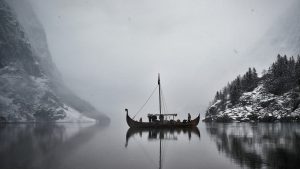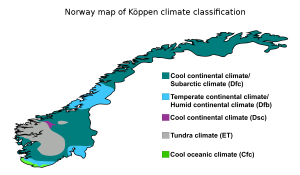History of Norway
The history of Norway can be traced back to the Paleolithic era, around 10,000 BCE, when early humans arrived in the area. Over the centuries, Norway has been home to various groups of people, including the Vikings, who are known for their seafaring skills and conquests throughout Europe.
Early Settlements
The earliest known settlements in Norway date back to the Mesolithic era, around 8,000 BCE. These early inhabitants were hunter-gatherers who lived in small communities along the coast and in the fjords. Later, during the Neolithic era, around 4,000 BCE, farming communities began to emerge in Norway. These communities were based around agriculture and animal husbandry, and they eventually spread throughout the country.
Viking Age
The Viking age in Norway began in the late 8th century and lasted until the mid-11th century. The Vikings were skilled seafarers who conducted raids throughout Europe and established settlements in other parts of the world, including Iceland, Greenland, and North America. The Vikings were also known for their culture and mythology, which included gods like Odin and Thor and tales of heroic warriors.
Medieval Period
The medieval period in Norway began in the 11th century and lasted until the 16th century. During this time, Norway became a kingdom, and the country experienced periods of prosperity and expansion, as well as political turmoil and conflict. In the 14th century, Norway entered into a union with Denmark, which lasted until the early 19th century.
Modern Era
In the early 19th century, Norway gained independence from Denmark and became a separate kingdom. The country experienced significant economic growth in the late 19th and early 20th centuries, due in large part to its natural resources, including oil, gas, and fish. Norway was also involved in both World War I and II, and the country played an important role in the development of the United Nations.
Today, Norway is a prosperous and democratic country, known for its social welfare system, environmental policies, and high standard of living. The country is also home to a rich cultural heritage, including traditional music, art, and literature.

Location
Norway is a country located in Northern Europe, situated on the western portion of the Scandinavian Peninsula, and shares land borders with Sweden, Finland, and Russia. Norway’s coastline stretches for approximately 63,000 kilometers, with fjords and islands creating a complex and rugged coastline. The country’s northernmost point is located at 71 degrees north, while its southernmost point is located at 57 degrees north. The country’s capital city is Oslo, located on the southern coast of the country.
Norway’s geographic location has played a significant role in its history and development as a country. The country’s coastal location has facilitated trade and fishing, while its rugged terrain has created a strong sense of regional identity and independence. The country’s location on the northern fringes of Europe has also made it a strategic location for military defense and control of sea routes.
According to the CIA World Factbook, Norway’s geographic coordinates are 62 00 N, 10 00 E (CIA, 2022). Norway’s total land area is approximately 323,802 square kilometers, with a population of approximately 5.4 million people (CIA, 2022).

Climate
Norway’s climate is mainly influenced by the North Atlantic Drift, which is a warm ocean current that flows along the west coast of Norway. This warm current helps to moderate the country’s temperatures, but Norway still experiences a wide range of weather patterns due to its high latitude and rugged terrain.
The coastal areas of Norway have a relatively mild climate compared to the inland regions. The average temperature in the summer months ranges from 12-18°C, while the winter temperatures average between -2°C to 4°C. The western coastal region experiences more rainfall than any other region in the country. This region is characterized by high precipitation levels throughout the year, with an annual average of about 2,500 mm of precipitation.
Inland Norway, on the other hand, has a more continental climate characterized by cold winters and warm summers. The temperatures in this region can vary significantly from one location to another due to the mountainous terrain. The average temperature in the summer months ranges from 10-16°C, while the winter temperatures can fall as low as -40°C.
Norway also experiences the phenomenon known as the midnight sun, which occurs in the summer months in the northern part of the country. During this period, the sun does not set for several weeks, resulting in 24 hours of daylight.
In terms of climate change, Norway is experiencing a warming trend, with temperatures increasing at a faster rate than the global average. This trend is resulting in melting glaciers, rising sea levels, and changes in the country’s ecosystems.

Languages
Norway is a country with a rich linguistic heritage, and several languages are spoken within its borders. The official language of Norway is Norwegian, which is spoken by the majority of the population, but there are also several minority languages spoken in various parts of the country.
Norwegian is a North Germanic language and is closely related to Swedish and Danish. It has two official written forms, Bokmål and Nynorsk, which were established in the 19th century as part of a language reform aimed at standardizing the Norwegian language. Bokmål is based on the written language used in Oslo and the surrounding areas, while Nynorsk is based on rural dialects. Both forms of Norwegian are used in education, media, and government, but Bokmål is more commonly used and is the preferred written form for most Norwegians (Gussgard, 2018).
In addition to Norwegian, there are several minority languages spoken in Norway. Sami is the largest minority language and is spoken by around 20,000 people in the northern parts of Norway, Sweden, Finland, and Russia. Sami is actually a group of languages, with several distinct dialects, but all are recognized as official minority languages in Norway (Huss, 2018). Other minority languages spoken in Norway include Romani, Finnish, and Kven, a Finnish-related language spoken in northern Norway.
Norway has a long history of language contact and bilingualism, and many Norwegians are fluent in multiple languages. English is widely spoken and is often used as a lingua franca in international business and tourism. Other common languages spoken in Norway include Swedish, Danish, German, and French (Bjerkan, 2017).
In recent years, there has reflect the country’s history, geography, and cultural diversity. Norwegian is the official language and is spoken by the majority of the population, but there are also several minority languages spoken in various parts of the country. The largest minority language is Sami, which is spoken in the northern parts of Norway, Sweden, Finland, and Russia. Other minority languages spoken in Norway include Romani, Finnish, and Kven. English is widely spoken as a second language, and there is a growing interest in preserving and promoting minority languages in Norway.

